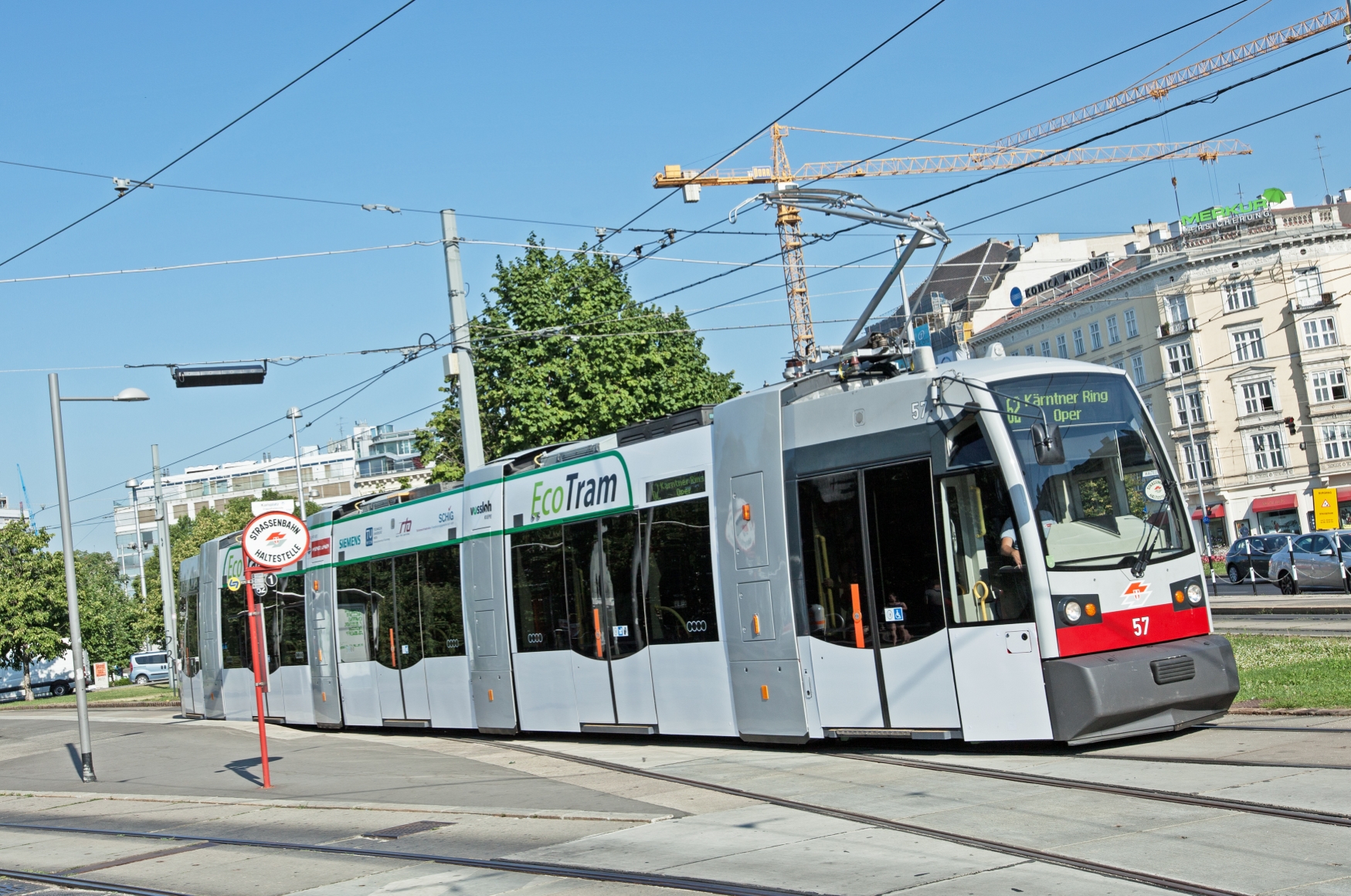Intelligent trams result in more comfort for its passengers. Different sensors measure the inside and the outside temperature as well as the number of passengers on the tram and adapt the heating or the cooling system accordingly.
After initial test phases in the climatic wind tunnel and during passenger service, Wiener Linien [Vienna Public Transport] is now trialling a test prototype out on the tracks to refine their knowledge – all as part of the “EcoTram” project. To start with, the tram will be used on line 62 until approximately the end of March 2014. The EcoTram wrap down the sides will make the tram visible to passengers along the route.
Since 2009, Wiener Linien has been working together with numerous partner firms on the EcoTram project, funded by the Climate and Energy Fund. The aim is to determine potential savings in heating, ventilation, and air-conditioning in low-floor trams. Consequently, energy savings and increased comfort for passengers should become interlinked.
In the first phase of the project, an ultra-low-floor tram was equipped with numerous sensors and tested in a climatic wind tunnel. It was then tested out on the tracks operating under different conditions, so as to collect important data about energy consumption. Subsequently, measures were developed to improve levels of efficiency and comfort and were incorporated into a prototype. Over the past weeks, these measures were tested in the climatic wind tunnel and will now be used during passenger service for the first time.
Package of measures to be tested during passenger service
During the tram tests, a heat pump will be in operation which, through the use of ambient heat and cool air, should allow energy-saving heating and air-conditioning. A built-in system also allows the tram to be pro-active. Using empirical values from the previous tests, the system cools down and heats up the vehicle as a precautionary measure with regard to the expected number of passengers as well as the climatic conditons. A special application on the side windows reduces the sunlight and brings about a significant improvement for the passengers inside the tram. In addition, a new system that supplies fresh air is thought to have energy-saving potential and the added benefit of improving passenger comfort. Special sensors inside the tram measure the number of passengers in order to provide the optimal level of incoming fresh air. The air-conditioning system of the tram prototype has been adapted so that a continuous, intelligent transition between the different levels should mean a more pleasant climate inside the vehicle.
After the completion of the test phase, the newly collected data will once more be evaluated, and the system will be assessed to see whether it can be rolled out on a wider basis.
Contact
Wiener Linien GmbH & Co KG
E-Mail: presse@wienerlinien.at
Website: www.wienerlinien.at
This post is also available in: German




